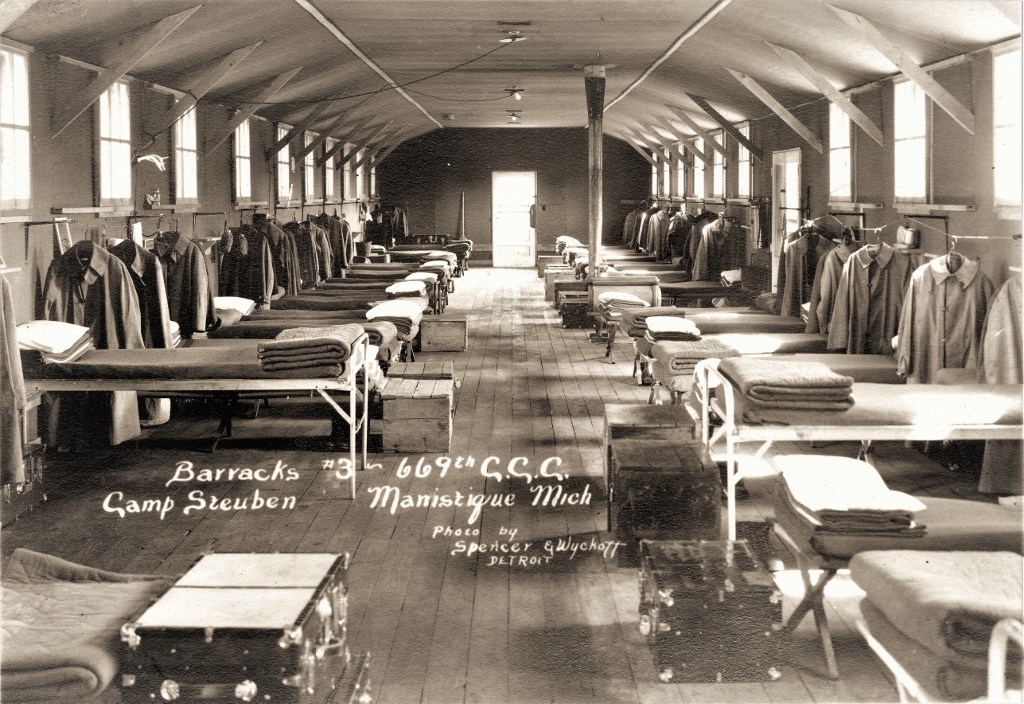
Certificate in Memory of Henry Davis signed by General John Pershing
Henry Davis was born in Manistique on January 8, 1900. He attended school here and was always very fond of history. Prior to his enlistment, he was employed with the Soo Line Railroad in the baggage department. He joined the army in April of 1917 at age 17, having received special consent from his parents. Davis was one of the volunteers who left Manistique on May 6, 1917, having joined the 33rd Michigan Infantry, a National Guard unit. This unit was later federalized and become part of the 125th Infantry. Davis arrived overseas in February of 1918 and was initially placed with the Railway Transportation Office. When he last wrote to his parents, he stated that the 125th would “soon be going into the thick of the fighting” and that maybe some of the boys would be hurt but they would “put the Germans of the run.” Henry Davis was killed in action in France on July 31, 1918.


